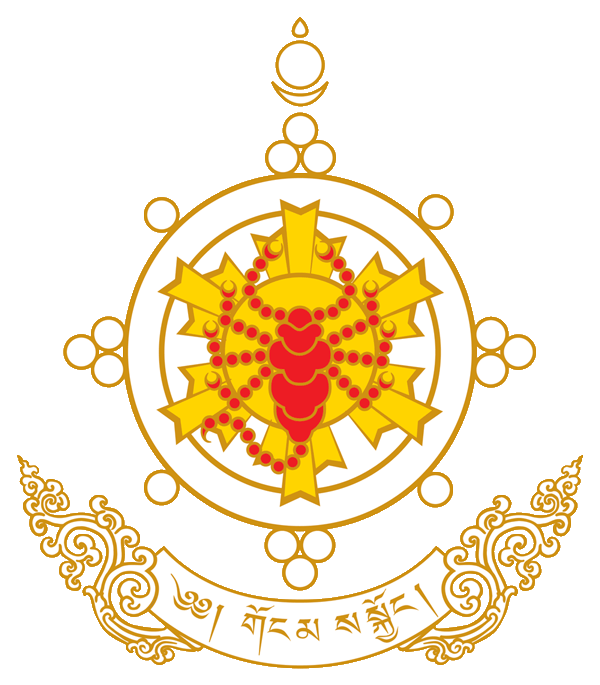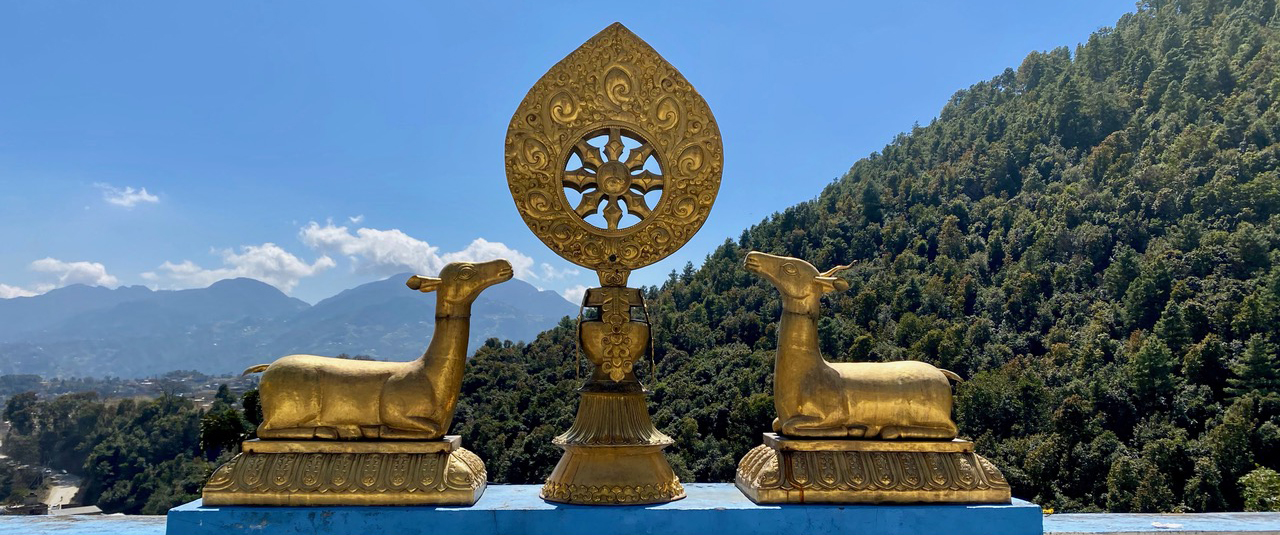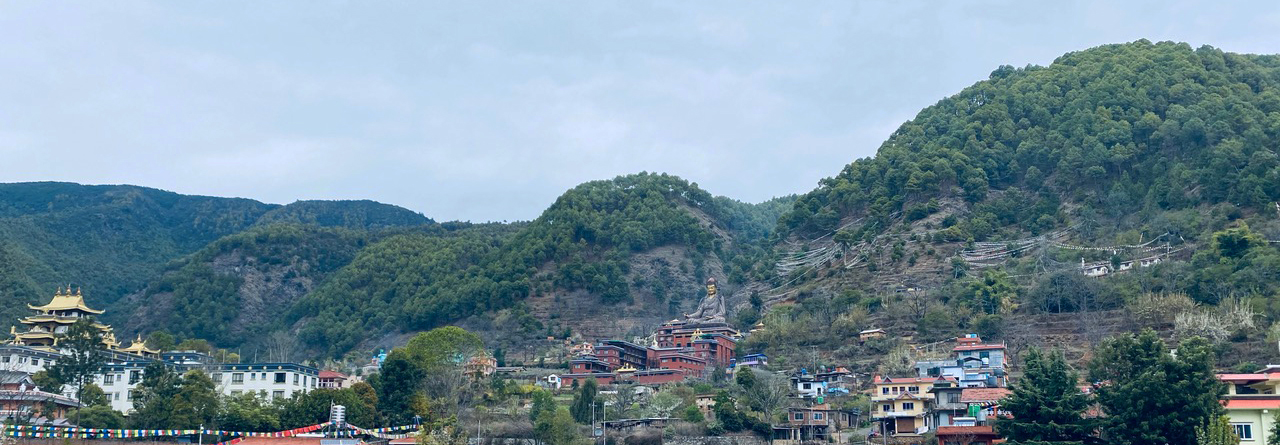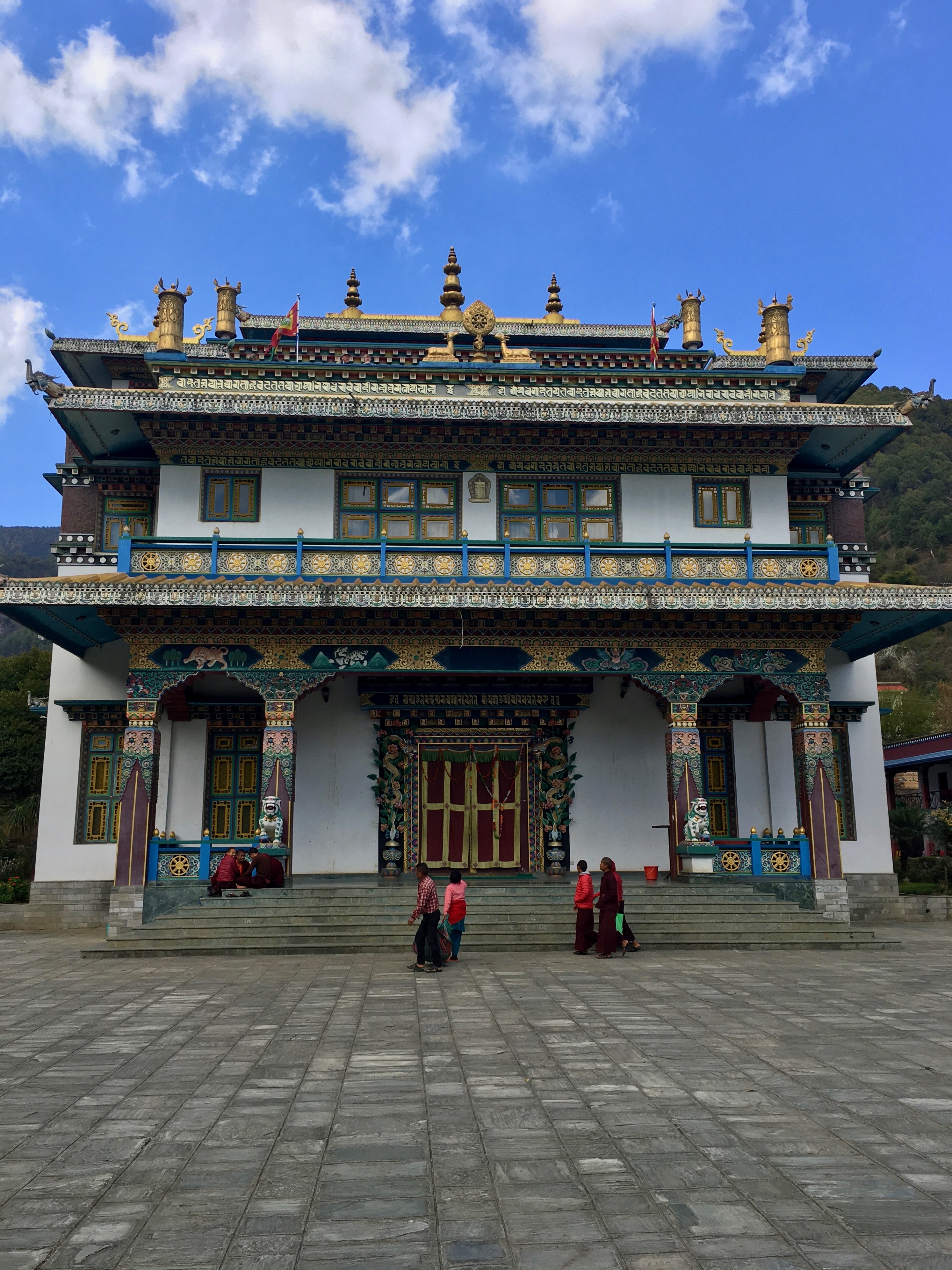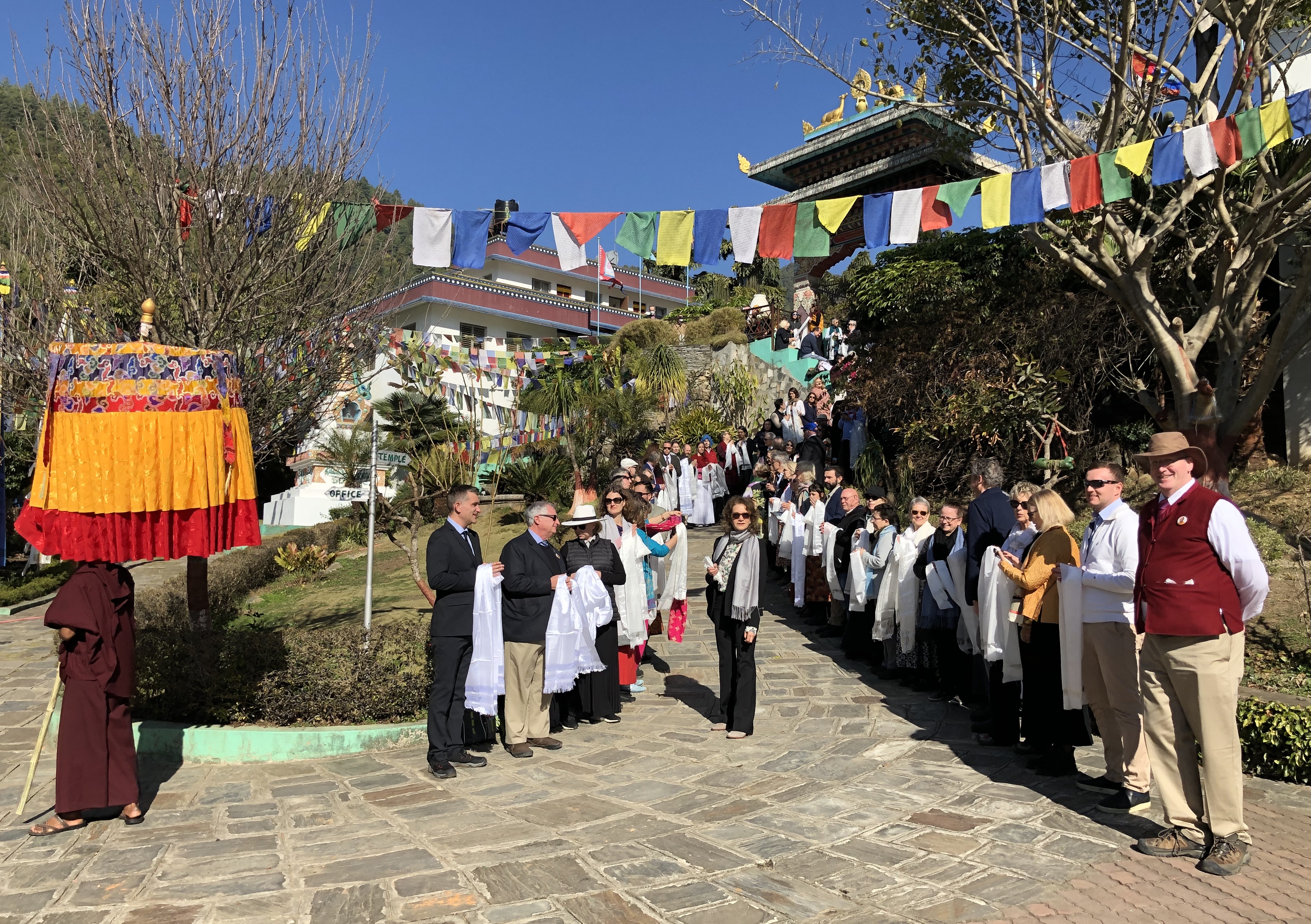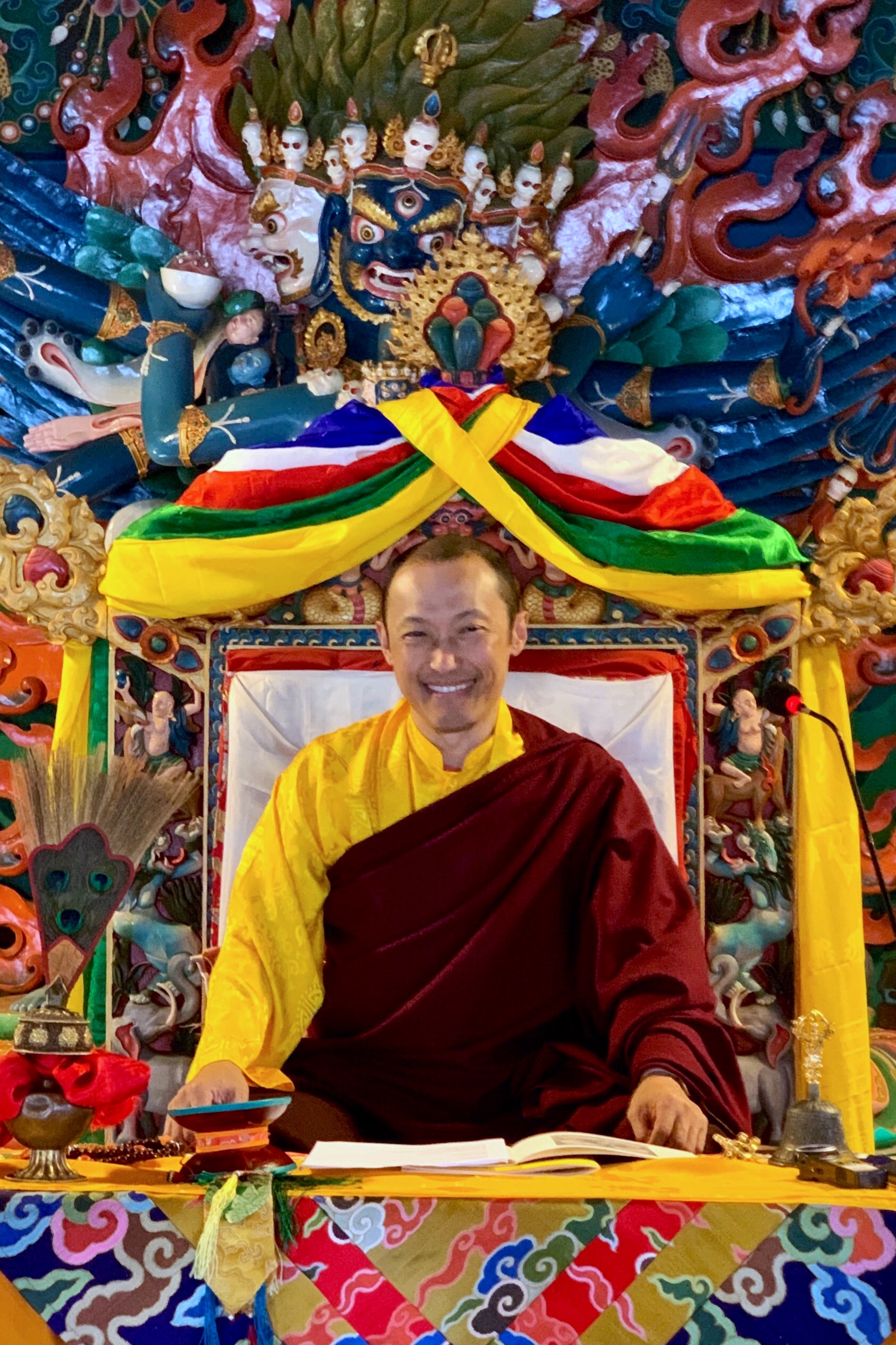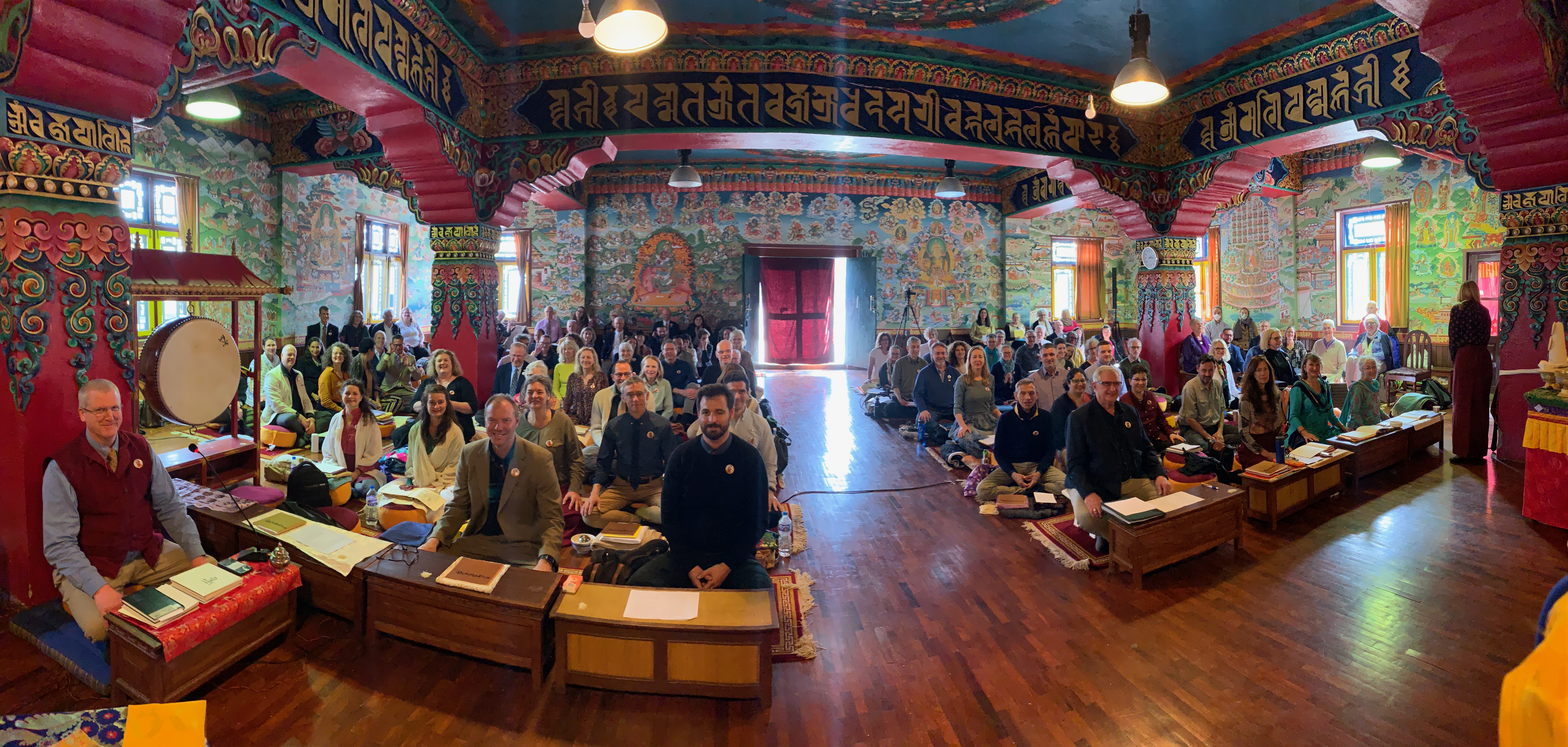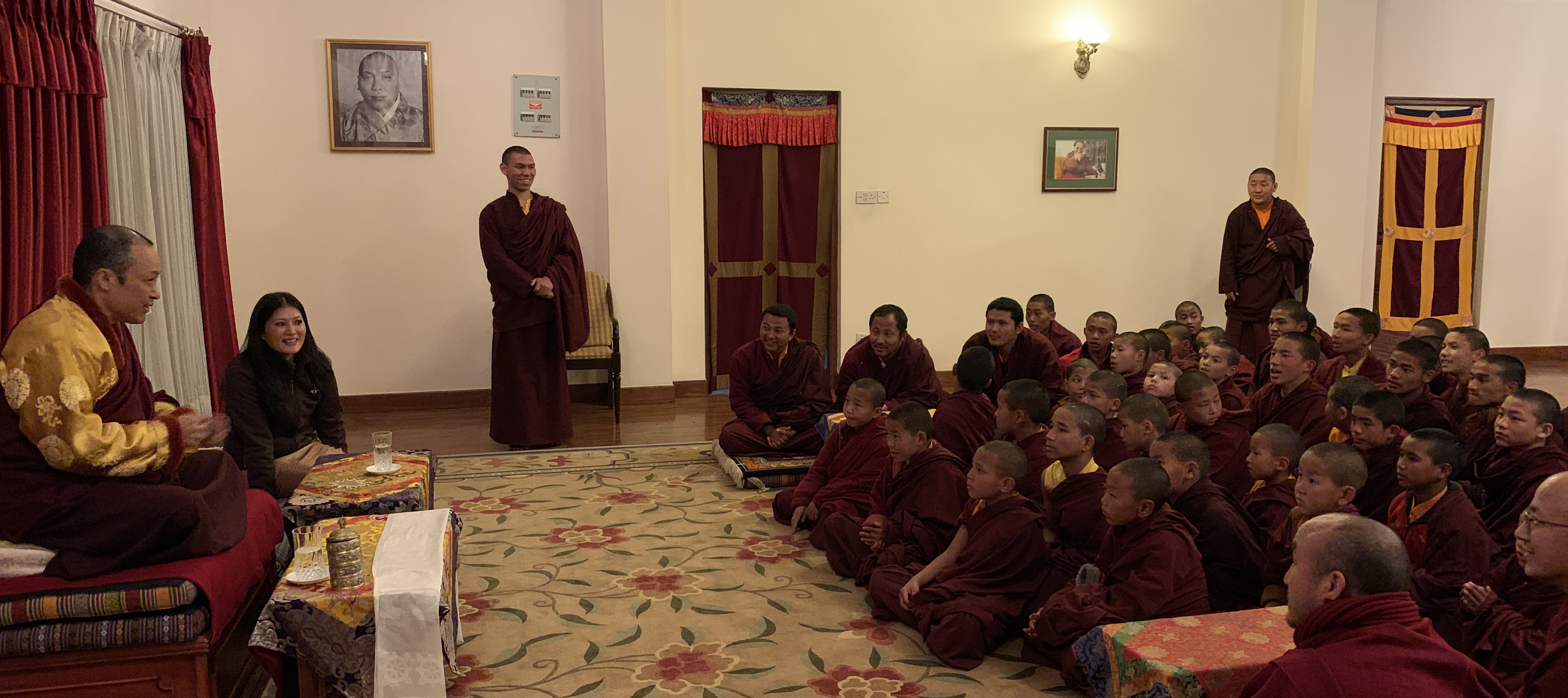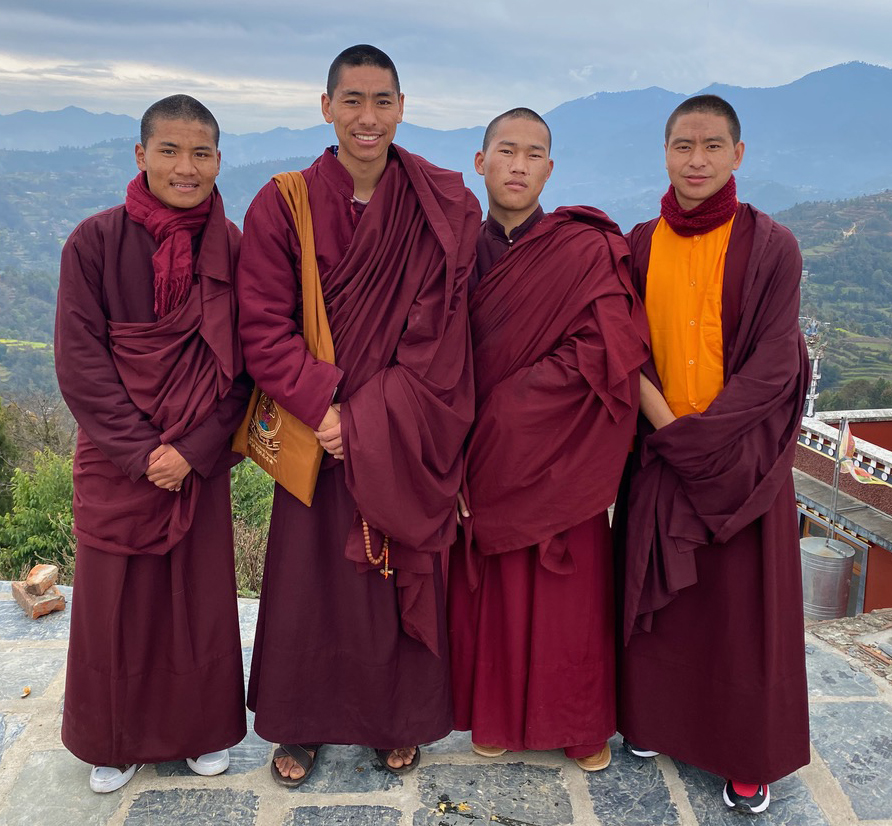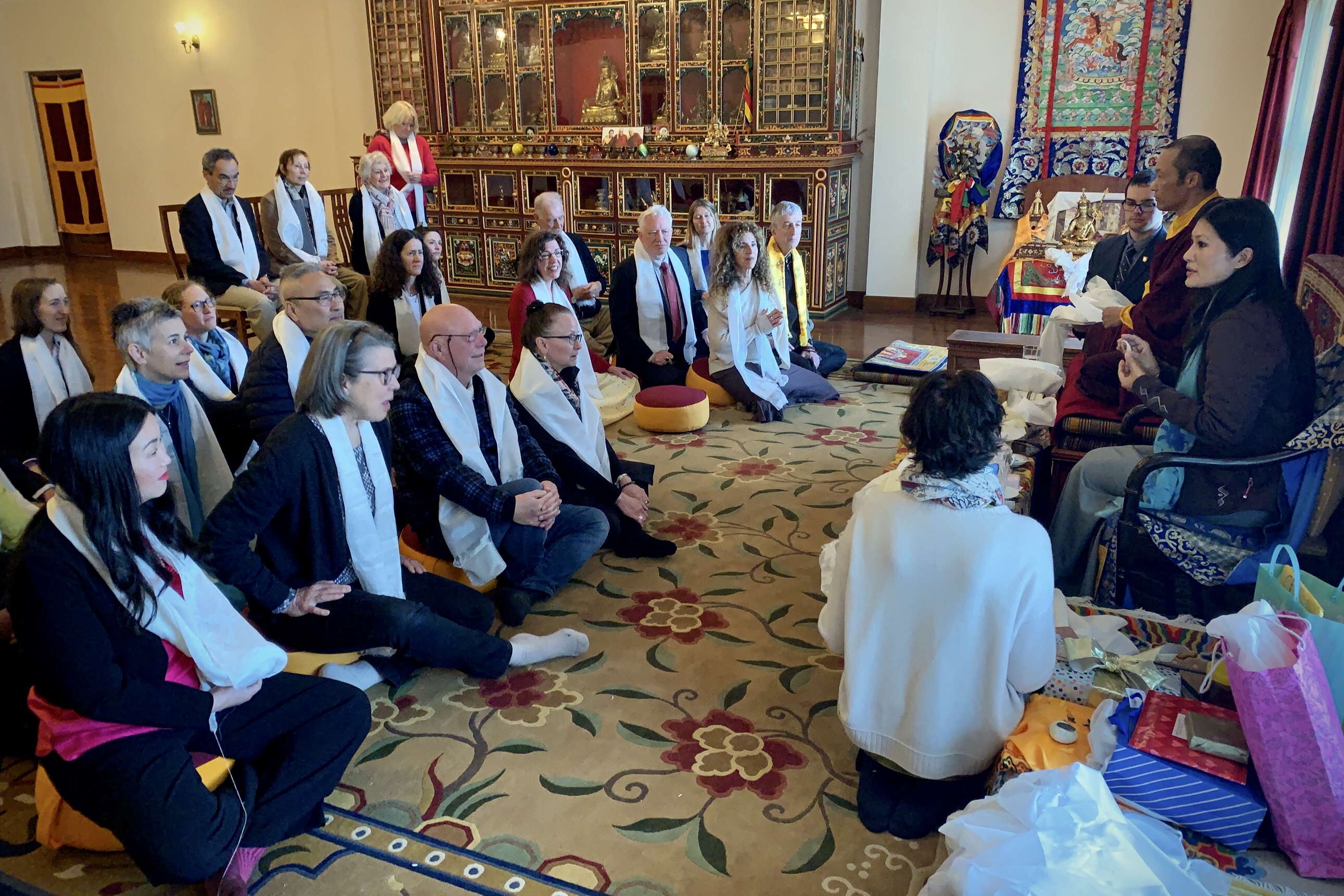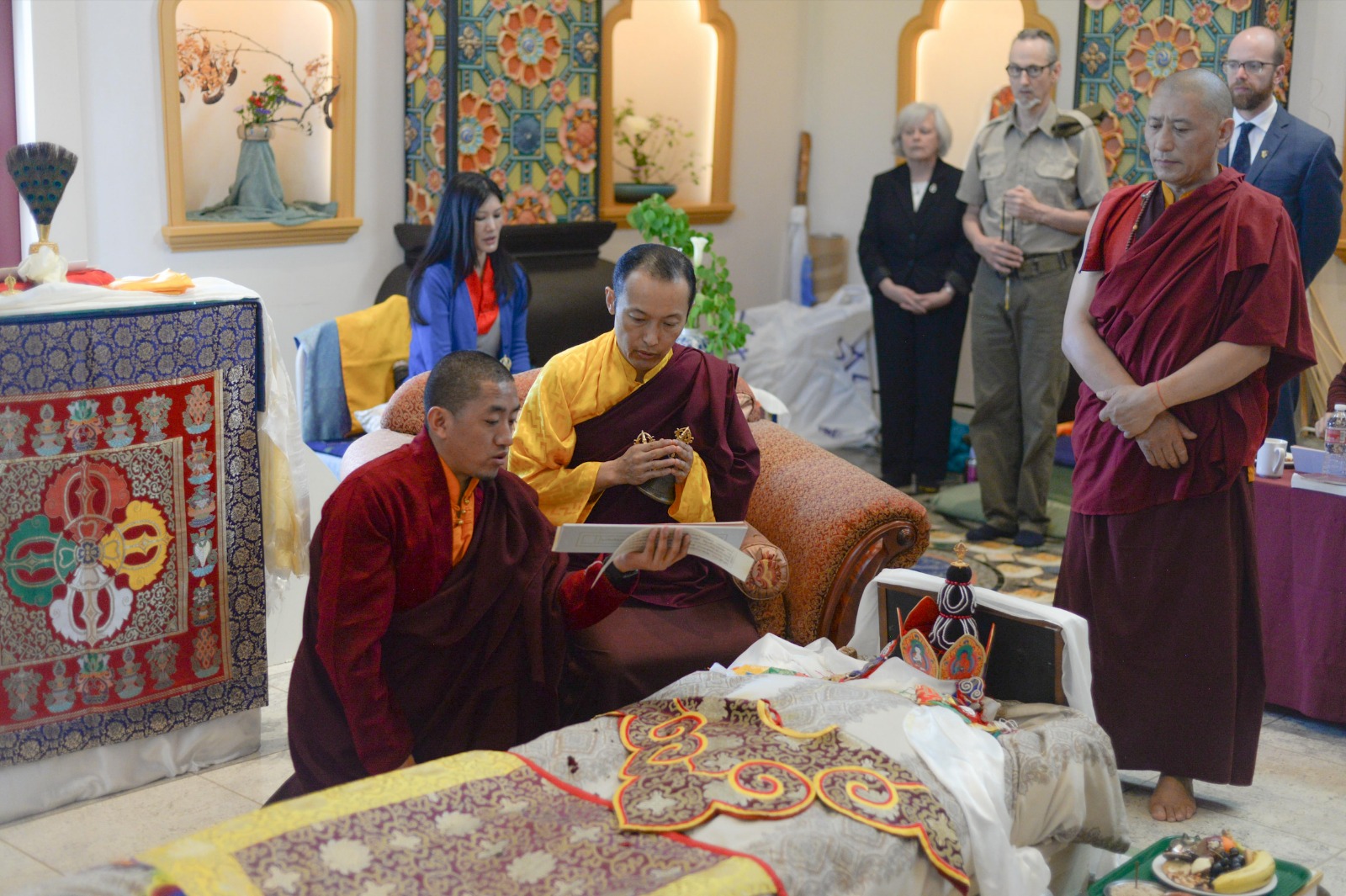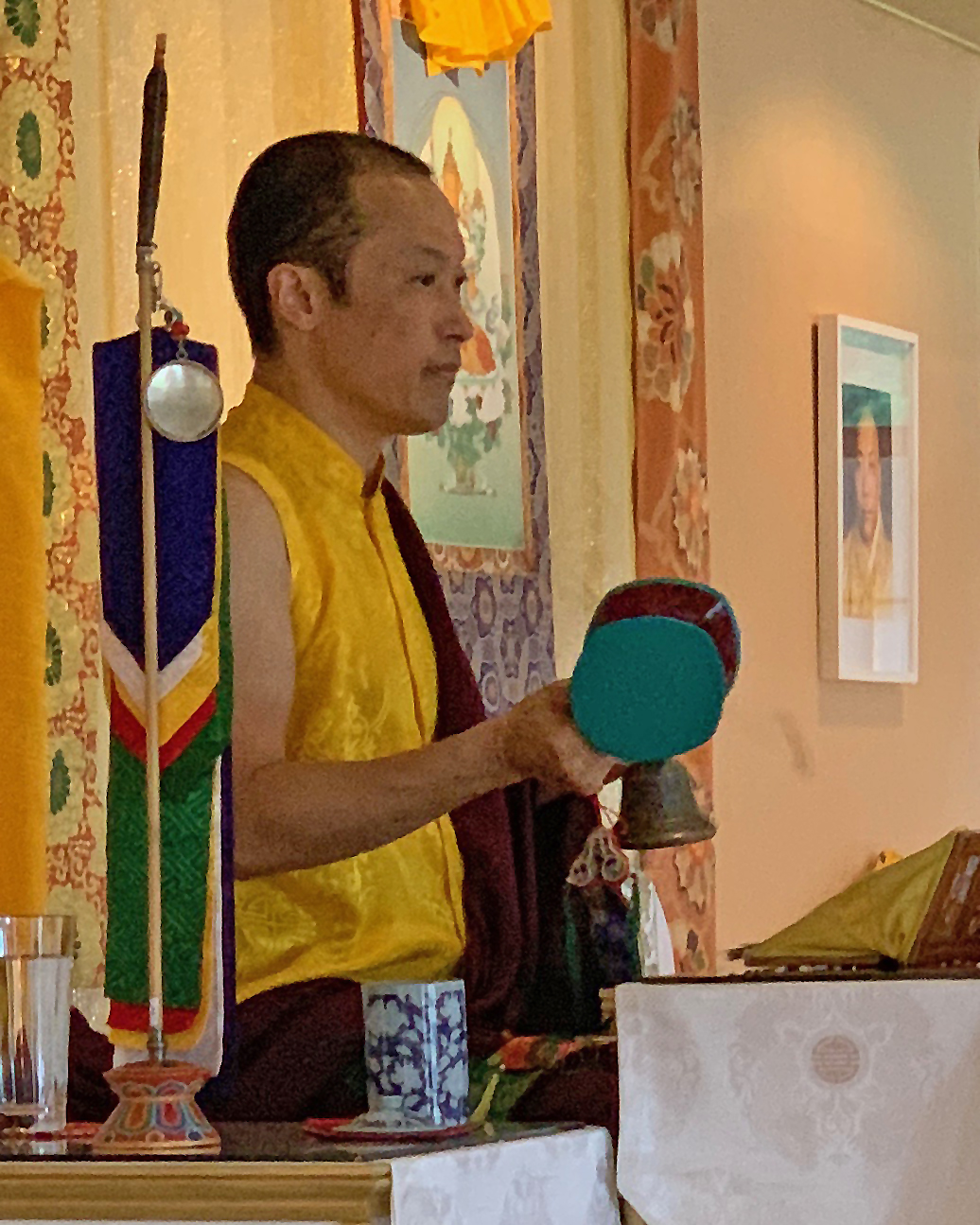Rigden Nepal Pilgrimage March 8-15, 2020
On March 8th, early in the Year of the Iron Mouse, 108 pilgrims entered retreat with Sakyong Mipham Rinpoche and the Sakyong Wangmo in Pharping, Nepal. The retreat was a time to reconnect and renew the relationship between teacher and students. This pilgrimage was remarkably international with representation from 17 countries and sizable groups from Colorado, the East Coast, Nova Scotia, the Netherlands, France, and Brazil. Amidst keen awareness of the growing tragedy in the world, this special gathering was one of practice, windhorse, love, and forward vision.
This was a grassroots gathering of students who wanted to be with their teacher after what for many of them had been two or more years of separation. All came to Nepal feeling they represented many other people—those they knew at home, people who were unable to come or didn’t hear about the pilgrimage, and those they’ve never met. The trip was born from the inspiration of a small group who’d visited the Sakyong and the Sakyong Wangmo last year, who felt that many students of Rinpoche longed to see and be with the lineage holders in order re-establish the Sakyong lineage in the hearts of all.
The opening days of orientation and preliminary practice were a heartfelt reunion as people acclimatized to Nepal’s altitude and felt the gentle aura of its peaceful culture. The retreat itself was hosted at Rigon Tashi Choeling, His Eminence Tertön Namkha Drimed Rabjam Rinpoche’s monastery in a beautiful valley in Pharping. The pilgrims were lodged in guest houses around the valley, which sits between two forested ridges that form a naturally arising circle of the eight auspicious symbols, a garland of majesty around the many Nyingma and Kagyu monasteries and retreats that have arisen there in one of the most powerful regions of practice in Nepal. It was in this area that Padmasambhava attained mahamudra and realized Vajrakilaya, the embodiment of awakened fearless buddha activity, overcoming a plague while he was practicing the attainment of the mind aspect of all the Buddhas.
On the 9th, the morning of the auspicious full moon, Rinpoche and the Sakyong Wangmo arrived at the monastery. They were formally greeted by long rows of pilgrims and monastics lining their path as they ascended the steep stone stairs to the main courtyard. Tibetan horns signaled celebration in the warm, morning sun as pilgrims and monastics alike held white khatas, symbols of devotion and purification. Many pilgrims shed tears as they followed the Sakyong and the Sakyong Wangmo into the monastery.
The pilgrimage practice sessions occurred in the large and overwhelmingly beautiful Gesar shrine room, which is above the huge main shrine hall at the monastery and easily accommodated the pilgrimage group. Gesar of Ling is the warrior-bodhisattva who is revered in Tibet as the protector of the buddhadharma, an emanation of Padmasambhava who tamed barbarism and re-established the teachings after a period of degradation in the early stages of Buddhism there. The Gesar shrine room is the only one of its kind in the Himalayan region outside Tibet. The walls of the shrine room are frescoed with the narrative of the epic of Gesar as well as the forms of Gesar and retinue revealed in His Eminence’s termas, which present a complete path to realization based on Gesar of Ling. Its central image is a massive statue of Vajrakilaya flanked by different statues of Gesar and his retinue from His Eminence’s termas, as well as a large statue of Dorje Tsegyal, a form of Gesar that was a central practice of Chögyam Trungpa Rinpoche’s in Tibet, one that influenced him greatly. Gesar of Ling, along with the Rigdens of Shambhala, is the source of the Shambhala termas.
The opening day of practice with Rinpoche and the Sakyong Wangmo began with a blessing line, a moment for people to personally offer their khatas as a greeting to the Sakyong and the Sakyong Wangmo before the day’s practice began. It was an incredibly touching moment to see Rinpoche and the Sakyong Wangmo personally connecting with every single member of the assembly. There were so many simple expressions of love and attention. Warmth and emotion pervaded everyone’s faces as they made their way back to their seats after the blessing, their shoulders draped with white scarfs.
The practice that day was a Gesar Drala puja, the most secret form of Gesar in His Eminence’s revealed termas. Much like the Imperial Rigden in the Werma Sadhana—the heart liturgy of the Shambhala terma—Gesar Drala is in golden armor, but riding a red stallion. His Eminence gave permission for the Sakyong to do this practice specifically for the Sakyong’s students and activity on this auspicious day. It is rare for a living tertön to authorize dedicated practice like this of their own terma. The atmosphere of the puja was remarkably nuanced because of the rich voice of the chant leader, Tulku Karma Shedrup, Namkha Drimed Rinpoche’s brother, a renowned umdze and Gesar practitioner who has memorized most of the Gesar epic.
During this first day, Rinpoche led the practice with the lamas of the monastery who had assembled to join the retreat for the morning and afternoon. The pilgrims soaked in the warm energy and melodious chanting and music of the puja, increasingly aware that they were in an environment that has hosted the Buddha’s teachings for 2,600 years rather than the few decades of Buddhist practice we’ve come to know in the West. The puja had a natural, nourishing quality that accentuated one of the most humbling and inspiring aspects of the retreat. We were finding our way home in a true sense of being embraced by a culture that has held the words of the Buddha and Padmasambhava as its own life force.
The next three days of the pilgrimage were for daily group practice, with a focus on Gesar in the morning, Padmasambhava in the afternoon, and short practices of Vajrakilaya throughout the day. The cycle of these practices seemed to call forth more and more meaning and inspiration, both about the place where the retreat was being held, and the termas and importance of the Sakyong lineage. Sakyong Mipham Rinpoche and the Sakyong Wangmo joined the group in the afternoons for Jamgön Mipham’s renowned Rain of Blessings, the Padmasambhava guru yoga practice. During these sessions there were also talks and remarks from Rinpoche and the Sakyong Wangmo. Rinpoche and the Sakyong Wangmo were completely engaged with the pilgrims and met with small groups as well as the large assembly throughout the event. It was not a time for politics or personal issues but rather for sharing the joyful heart of the lineage and feeling a shared path forward.
Over the past two years, Rinpoche has accomplished many solitary retreats and pujas, taking time to self-reflect on what has occurred, the messages he has received, the many private meetings he has had with students, and the future of the Sakyong lineage and Shambhala teachings. His talks and warmth conveyed the deep confidence of these two years, reflecting faith and devotion as the ground for the lineage going forward. He said that he was delighted to see that so many people had come and that this moment for him was like a dream. It seemed clear to us that the lineage would manifest both inside and outside the Shambhala organization, but more than this, it would be based on the dialogue of supplication and response between teacher and students that creates the auspicious circumstances for the teachings to be presented.
At the core of creating such circumstances is the teacher-student relationship. Rinpoche’s talks explored this topic from a variety of vantage points. He spoke about Chögyam Trungpa Rinpoche’s journey out of Tibet and how his teachings evolved in the West. In addition, he talked about starting over from the beginning, faith and the practice of guru yoga, the need to care for our shrines in order to create an environment of greater confidence, and the meaning and importance of daily protector practice. The Sakyong Wangmo echoed many of these themes from her perspective, emphasizing the importance of practice in difficult times and that we are part of a practice lineage. Her unwavering confidence in Rinpoche was underscored by her holding the Ripa lineage and its extraordinary extension of care and protection of the Sakyong and their family.
On the morning of the 3rd day of daily practice, His Eminence Namkha Drimed Rinpoche visited the retreat. He gave a penetrating talk on the challenges facing the community, explaining at one point that since the time of the Buddha, sanghas and teachers have faced obstacles. His Eminence emphasized the importance in difficult times of making one’s own decisions and striving to receive the teachings. He also pointed out the value of going forward with inspiration and faith. Because of His Eminence’s experience of the tragedies in Tibet and his deep connection with the Vidyadhara and the Sakyong, these heartfelt words were very moving to everyone.
The next morning, the pilgrims broke into small groups to share their insights and aspirations for the future. Common themes included confidence, connecting with the Buddhist roots of the Shambhala teachings, and being unafraid of establishing the lineage. Overall, it was obvious that there was an immense feeling of satisfaction, clarity, and strength pervading the assembly as a result of the blessings of the pilgrimage.
That afternoon there was a celebratory Padmasambhava feast with Rinpoche and the Sakyong Wangmo and their eldest daughters, Jetsun Drukmo and Jetsun Yudra, as well as the main lamas at the monastery. This was a time to express appreciation to everyone involved in the pilgrimage. Gifts and thanks were offered to Rinpoche and the Sakyong Wangmo as well as the monastery and the many others who had worked hard to manifest this event. Afterward, there was a celebration at a resort up the hill, where the Western lay practitioners could relax in conversation and good cheer. By this point, the cause for celebration was enhanced by the communal recognition that the Tibetan world and the world of Shambhala were not separate, and that everything we were experiencing with Rinpoche and the Sakyong Wangmo in the monastery was part of a natural, holistic expression of dharma in which we found ourselves completely at home.
As a transitional day, Rinpoche and the Sakyong Wangmo brought the group to a major sacred pilgrimage site, Namo Buddha, which is home to one of the three main stupas in Nepal. Namo Buddha is venerated because it is the place where, in a life prior to his complete enlightenment, the Buddha offered his body to a starving tigress and her five cubs. It is on a high ridge on the eastern side of the Kathmandu Valley with an incredible view of the upper Himalayas, an endless wall of snowcapped mountains spreading across the northern horizon that forms a natural border with Tibet. After leading practice with the monastics and pilgrims at the stupa where the relics of the incarnation of the Buddha are enshrined, Rinpoche and the Sakyong Wangmo took the pilgrims to the peak of Namo Buddha, where the act of the compassion was shown to the tigress and her cubs. One side of the ridge is now home to a massive monastery complex, which radiates a sense of majesty and merit over the region.
The final day of the pilgrimage was a time for people to settle in Kathmandu before departing. That evening, the pilgrims gathered at a hotel in the city for a final banquet with Rinpoche and the Sakyong Wangmo before heading home. Because of the travel disruptions caused by the pandemic, some of the pilgrims had to reschedule flights, but all still found time to experience the magical atmosphere of the city, which at that point had but one incidence of the virus. It was a small miracle that the virus had not spread in Nepal during the pilgrimage. The retreat itself was isolated, and people were generally healthy the entire time.
In telling the story of the journey afterward, pilgrims often remarked on how happy Rinpoche and the Sakyong Wangmo were to see and be with everyone. It was palpable at each meeting, large and small, throughout the event. The warmth and appreciation they extended to the students, who had made the trip with devotion and no expectation but to see and practice with their teacher, was deep and powerful.
Overall, it was a wondrous pilgrimage and a fortunate moment to touch the roots of the lineage, both present and past. Along with that, there was a glimpse of the future in seeing the daughters of Rinpoche and the Sakyong Wangmo, genuine and joyful, with their parents. One of the greatest duties of any teacher’s sangha is to make the lineage available for the next generation. The presence of the Jetsunmas was a reminder that we must look ahead with the question: How can we create the best situation for them to carry the lineage forward?
May we all join East and West, past, present, and future, through pilgrimages, teachings, and visits by the lineage to places all over this world! KI KI SO SO!
With much love, and many warriors’ cries and aspirations for future meetings between teacher and students,
The Rigden Nepal Pilgrimage 2020 Operations Group: Magda Brancewicz, Ilse Batselaere, Walker Blaine, Bob Taylor, Jane Vosper, and Jeanine Greenleaf and Hermien Rodenburg [2020 Rigden Nepal Pilgrimage 2020 Planning Team]
